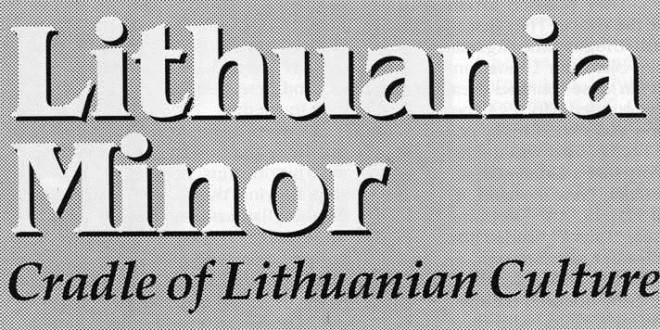BY VYTAS KERNIUS.
PERHAPS SOME OF YOU have heard the name of Lithuania Minor being mentioned in one context or another. And after the demise of the Soviet Union, the name of the Kaliningrad region keeps popping up in the international press at a more frequent rate. But where in the world is Lithuania Minor or Kaliningrad, and what do these places mean to Lithuania and Lithuanians?
LOCATION AND DESCRIPTION
Lithuania Minor is the area on the southeast rim of the Baltic Sea enclosed by the Republic of Lithuania to the north and east, and Poland to the south. Although up until the First World War it was officially part of the northeastern section of German Prussia, from as early as the 16th century German writers and historians had called this area “Kleinlittaw” (Little Lithuania). The northern part of Lithuania Minor, which Lithuanians call Karaliaučius and the Germans Konigsberg, became occupied by the Soviet Union during the Second World War and renam ed Kaliningrad Region (Kaliningradskaia Oblast). The southern part was assigned to Poland. Since then Kaliningrad has undergone heavy colonization and militarization by the Soviet Union and Russia.
The relations of both Germany and Russia to this area have always been that of an occupier and colonizer, but Lithuanian roots in Lithuania Minor go back thousands of years. This is attested by the thousands of place-names of Baltic origin covering the landscape. Historically, culturally, ethnographically an d linguistically Lithuania Minor is more closely related to Lithuania than to any other country.
EARLY HISTORY
The area was settled over 4,000 years ago by people w ho together w ith the Lithuanians and Latvians form ed the Baltic branch of the Indo-European group. From betw een 600 and 400 B.C. these people were already known as Prussians. Unlike the Germans who conquered and later ruled the area as Prussians, these “Old Prussians” were of Baltic, not Germanic stock. The three Baltic nations shared the same language, traditions, customs and pagan religion. The Old Prussians, whose inhabited area according to historians extended from the Nemunas River in the east to far beyond the Vistula (Wisla) River in pjesent-day Poland in the west, were comprised of many clans with such strange names as the Pomesanians, Pogesanians, Varmians, Baitians, Natangians, Sambians, Nadrovians, Skalvians, Galindians and others. It is believed that the Pomeranians and Pomerelians were also Prussians.
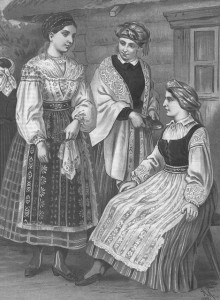
German power was first introduced to this area around 1228-30 A.D. The Holy Roman Emperor Frederick II “gave” the lands of the Prussians to the German Order of Teutonic Knights for the purpose of baptizing the pagans into the Christian faith and ruling over the conquered lands. The Teutonic Order was one of many religious-m ilitary organizations that were expelled by the Muslins from the Holy Land at the end of the Crusades, and were out of work. The Order invaded the land of the Prussians and from their fortress city of Marienburg began a war of conquest and plunder. In 1255 the Knights built the castle and city of K onigsberg or “King’s Hill” (Lat. Mons Regius or Regiomontum) on the Sambian peninsula, in place of an old Prussian fortress which local residents called Tvankste (which in Lithuanian means “sultriness”).
Over the course of several decades, with the support of the Emperor and other European monarchs, and the blessing of the Catholic Popes who called crusades against the pagan Prussians, the conquest of the area was completed. The Prussian population was exterminated or submitted to slavery. The conquerors assumed the name of the conquered and called their new state Prussia.
After consolidating their power in Prussia and uniting their forces with the Swordbearers – another German religious-military order who had conquered the Latvians and Estonians in the north – the Teutonic Knights directed their campaigns towards the Kingdom of Lithuania. The Order built a series of castles along the Lithuanian border from which incursions and attacks against the Lithuanians could be launched. One of these was the coastal fortress of Memelburg, built on the site on an old Lithuanian settlement named Klaipėda.
In 1410, the combined Lithuanian Polish armies invaded the lands of the Order and defeated its might at the Battle of Žalgiris (Tannenberg) . Lithuanian ruler Vytautas the Great, who led the battle to victory, proclaimed that the Order’s lands in Old Prussia Are my inheritance left to me by my forebears” . On another occasion King Vytautas remarked : “The Prussians descend from my ancestral family”. Unfortunately Lithuania did not regain Lithuania Minor.
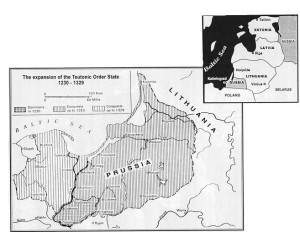
After a series of more defeats, the Order lost its military and political power, and saw its conquered lands greatly reduced by the expanding Lithuanian-Polish Alliance. During the Reformation, the Order’s Grand Master Prince Albrecht (Albert) of Brandenburg became a Protestant, made himself a Duke, and reorganized his state as the secular German Duchy of Prussia. This action cost him the support of the Pope and the Catholic m onarchs of Europe. After being threatened by outside forces, Albrecht was compelled to submit to the vassalage of the Lithuanian-Polish king. In a public ceremony, the Duke pledged allegiance to King Sigismund II from the House of Gediminas, who was actually his uncle.
As consequence of wars between Lithuania-Poland, Sweden and Russia during most of the 17th century, the Duchy of Prussia regained full sovereignty in l660, and in 1701 was renam ed as the Kingdom of Prussia. In the 18th and 19th centuries, this kingdom becam e a most powerful German state, and in 1871 it was the nucleus of the reunified German Empire.
MODERN TIMES
During World War I, as the collapse of both the German and Russian Empires seem ed likely, Lithuanians in Lithuanian Minor and Lithuania Major agitated for a union of both areas into a single new independent state. The Lithuanian Commission of Lithuania Minor, formed towards the end of the war, published an appeal on November 16, 1918 urging union with a re-established independent Lithuania. On the same day a mass meeting held in the city of Tilže elected the Council of Lithuania Minor made up of the most prom inent patriots in the region. In its declaration the Council stated that “We Lithuanians who live in Prussian Lithuania… demand… the incorporation of Lithuania Minor into Lithuania Major ‘. All these efforts did not receive m uch support from international bodies w ho w ere too involved in the finalization of the war.
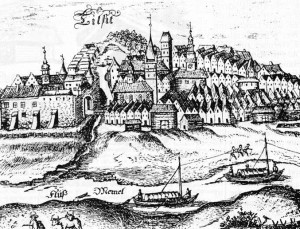
After loosing the war, Germany was forced to renounce ownership of the northeasternmost strip of Lithuania Minor called the Klaipėda Territory and the seaport city of Klaipėda (called Memel in German), which came under the protection of the victorious Allied Powers. France was signed the duty of ad m in iste rin g it. T he te rrito ry of Klaipėda was to be ceded to the Lithuanian Republic after it received de jure recognition by the international com munity. There were also proposals to make the territory a “Free Zone” (Freistaat) or to give it to Poland.
Even after the de jure recognition of Lithuania, the question of the Klaipėda Territory rem ained unresolved. Frustrated patriots formed the C om m ittee for the Salvation of Lithuania Minor and with the help of volunteers from Lithuania Major seized control of the territory. Shortly afterwards the area was annexed to the Lithuanian Republic. Although Lithuanian control of Klaipėda was confirmed by Germany in 1928, on March 22, 1939 Hitler issued an ultimatum to the Lithuanian government demanding the return of the territory, which Lithuanians unwillingly surrendered.
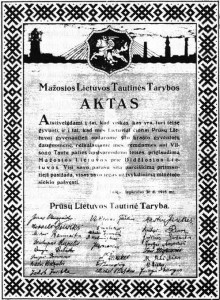
During the Second World War, the Soviet Union occupied both Lithuania Major and Lithuania Minor. Although Klaipėda was allowed to rejoin Lithuania, the Karaliaučius (Konigsberg) Territory was renam ed Kaliningrad and incorporated into the Russian Republic. The Peace Conference held at Potsdam in 1945 did not specifically allow the Soviet Union to do this, but only gave it temporary administration of the area until a final peace conference.
LITHUANIANS IN LITHUANIA MINOR
In earlier times, the population of Lithuania Minor was made up of Prussians, Lithuanians and German settlers. It is estimated that in some parts of Lithuania Minor, particularly its northern section, 80%-100% of the inhabitants were of Lithuanian stock. At the end of the 16th century, 20% of the residents of the city of Karaliaučius were Lithuanians. Over seven centuries of German rule, the Old Prussians became extinct, and the Lithuanians, to a large degree germanized. The region, however, continued to be know n as Prussian Lithuania or Lithuania Minor until 1945, since a significant portion of its population preserved the Lithuanian language and cultural tradition.
During the 15th and 16th centuries, the city of Karaliaučius was the hub of Lithuanian activity in Lithuania Minor. But other cities and towns such as Klaipėda, Tilže, Ragainė, Gumbinė, Isrutis, Labguva, Vėluva and Tepliuva were also very important in the preservation of Lithuanian language and culture in the area.
Karaliaučius became an important center of commerce, culture and learning. It was the main port through which goods from Lithuania were exported. Its main institution of learning, the Albertus University (Collegium Albertinum) was founded in 1541- 1544, and until the founding of Vilnius University in 1579, was the most important center of culture and scholarly knowledge in all of northeastern Europe. Among its founders and first instructors w ere the enlightened Lithuanians Stanislovas Rapolionis and Abraomas Kulvietis who had been invited to come to Lithuania Minor by Duke Albrecht himself. Scores of other Lithuanians taught or studied at the university. Many, such as Mažvydas, Bretkunas, Kleinas, Ruigys, Vaišnoras and Donelaitis, later distinguished them selves as noted educators and writers. The first book in the Lithuanian language, Martynas Mažvydas’ Catechism was published here in 1547. It w as follow ed by a number of other books w h ich included prayer-books, hymnals, dictionaries, collections of songs and literary works. Danielius Kleinas published the first grammar of the Lithuanian la n guage in 1653. Kristijonas Donelaitis, the world-renowned 18th century Lithuanian poet, wrote his famous epic poem “The Seasons”. Among others who studied at the university and later dedicated themselves to the study and scholarly research of Lithuanian folklore were Liudvikas Reza (Rhesa) and Friedrich Kuršaitis (Kurschat).
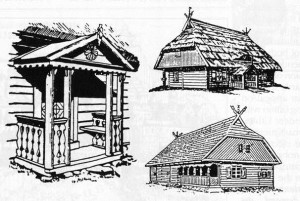
Lithuania Minor also produced many other famous Lithuanians who distinguished themselves in one area or another. For example, the noted cartographer Antanas Vydas (Wied), drew the first map of Russia, and perhaps of Lithuania. The celebrated philosopher Immanuel Kant, who taught at the University of Karaliaučius from 1770 to 1797, descended from an old Prussian or Curonian family who had settled in the Klaipėda region in the 15th or 16th century. In 1833 Karaliaučius became the home of the first Lithuanian newspaper. During the 18th and 19th centuries, various books in the German language dealing with Lithuania Minor, its inhabitants, traditions, folklore and the Lithuanian language began to be published by the printing houses of Karaliaučius.
During the 15th century, and especially the 16th, German colonization of Lithuania Minor began to slow down and many Lithuanians moved here from Lithuania Major. Some came to study, others to farm the land which in earlier times had belonged to the exterminated Old Prussians.
Contrary to their predecessors, the Prussian rulers in the beginning allowed and even encouraged the Lithuanian language and culture to flourish and prosper. In order to spread the Reformation not only among the inhabitants of Lithuania Minor, but of Lithuania Major as well, books in the Prussian and Lithuanian languages were printed, schools and churches built. Protestant teachers and priests were invited to come from Lithuania Major to teach and preach to their countrymen in their own native language. Students were invited to come to study at the university. The Prussian ruler himself financed their studies and the publication of Lithuanian books.
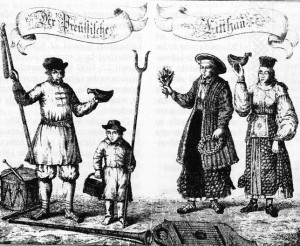
But all this ended after Prussia severed all political ties with the Lithuanian-Polish Commonwealth, and especially after the Kingdom of Prussia becam e involved in a series of wars with neighboring states. From that time on, non-German minorities, and particularly the Lithuanians and the descendants of the Old Prussians, began to be discriminated and mistreated. More wars, a devastating plague and subsequent famine decimated the local population. To replace it the Prussian king brought in colonizers from Germany, Switzerland, France, Holland and Poland. They received better lands and privileges and looked down at the local Lithuanians. The Lithuanians were forced to pay higher taxes, received lower wages, and were even ordered to wear clothes different from those of the Germans by royal decree. At this time the changing of place-names of Baltic origin into German-sounding names intensified. For example Ragainė or Raganytė became Ragnit, Vėluva became Wehlau, Gumbinė became Gumbinnen, Tepliuva became Tapiau, Isrutis became Insterburg, and so on.
During the second part of the 19th century the situation of Lithuanians in Lithuania Minor became deplorable. In the creation of the Empire, German rulers intensified germanization oppression of non-German minorities. Teaching children in the Lithuanian language was prohibited and preachers in churches were not allowed to give sermons in the only language the majority of parishioners could understand.
But Lithuanians being a hardy people, used to long periods of suffering, persevered and fought back. Lithuanian language and culture did not disappear even under those harsh conditions. While the language, culture and traditions were repressed and destroyed in Lithuania Major by the Russian czarist regime, in Lithuania Minor they were fostered and nurtured by patriots dedicated to their preservation and propagation. Newspapers in the Lithuanian language continued to be published and a number of patriotic organizations were founded. After the czar prohibited the printing of books and periodicals in the Latin alphabet in Lithuania, these continued to be printed in Tilžė, Ragainė and other Prussian cities and smuggled into Lithuania by the so called “knygnešiai” (book-smugglers). In other words, Lithuania Minor became the place where Lithuanian culture and national identity survived while they were being destroyed elsewhere in Lithuania. This culture, language and national spirit were nurtured by such great men as Vilius Storasta-Vydūnas, Martynas Jankus, Martynas Sernius and others. Many patriots from Lithuania Major came here to publish newspapers and books and to work for the liberation of Lithuania.
It was here, in the city of Ragainė, that Dr. Jonas Basanavičius began the publication of Aušra, the most influential newspaper of the Lithuanian renaissance period. And Dr. Vincas Kudirka, the author of the Lithuanian National Anthem , published Varpas, another patriotic newspaper which called on Lithuanians to “awaken” to their heritage. It was from here that the concept of national identity sp read throughout Lithuania Major and eventually culminated in its independence.
Lithuania Minor was also important in other respects. It was a window through which many Lithuanians escaped Russian repression and ended up in countries of Western Europe and even America. During the great wave of Lithuanian emigration from 1865 to 1914, hundreds of thousands crossed the border into Lithuania Minor. After reaching the ports of Bremen or Hamburg in Germany, they departed for England, Scotland and the New World. Many native inhabitants of Lithuania Minor, mostly of the Protestant faith, also left. Such was the case of the early Lithuanian settlers in Texas, who founded one of the earliest – if not the earliest – Lithuanian communities in the United States. Many of these immigrants bore germanized Lithuanian family names, which often makes it difficult to distinguish them from Germans.
POST-WAR PERIOD
After taking control of the Karaliaučius region, and in violation of the Potsdam Conference, the Soviets changed its name to Kaliningrad and incorporated it into the Russian Soviet Federal Socialist Republic. In 1946-1947 the Soviets initiated a policy of deportations, m ass executions and forced starvation of the local native population, which resulted in the almost total annihilation of any vestiges of previous human habitation. The original inhabitants were replaced by settlers brought in from various parts of the Soviet Union. All the ancient Prussian, Lithuanian and G erm an names of cities, towns and villages – even rivers, lakes and hills – were changed to newly devised Russian designations. Today the majority of the population of this region, which numbers around 900,000, is Russian (78%). It’s made up mostly of military personnel and their dependents, who contribute nothing to the region’s economic, social or cultural advancement. The rest of the residents are Belarussians, Ukrainians, Germans and a few other nationalities. Lithuanians make up only about 3-5% of the population (30,000). Most of them arrived here shortly after the end of the Second World War or moved here after returning from Siberian exile. Of the original pre-World War II inhabitants, a few Lithuanians, Germans and descendants of the Old Prussians remain. All others are new settlers. Most Germans living here today have been recently resettled from Siberia and Kazakhstan.
On September 12, 1990, both East and West Germany signed a treaty with the four victorious powers of World War II on the final settlement with respect to Germany’s unification. According to this treaty Germany gave up its sovereignty over its eastern lands beyond the Oder-Neisse boundary and over Karaliaučius. However the four powers did not bring up the question of the ownership of this territory. Since neither the Allies nor Germany signed any treaties to transfer the sovereignty of the Karaliaučius region to the Soviet Union or Russia, the legal status of this area remains undetermined.
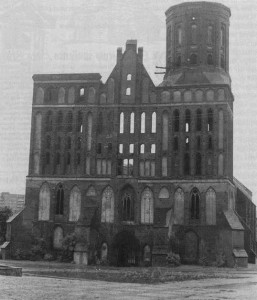
The Soviet Union created a militarized fortress out of the Karaliaučius region, a process which is being continued by Russia today. According to some sources, Russia has between 200,000 and 300,000 military personnel in the region, in addition to naval, air force and other installations. It is the heaviest concentration of military power in all of Europe, perhaps the world. It presents a threat not only to the three Baltic nations, but to all of Central and Northern Europe as well. The Baltic States have called on international organizations to bring up the question of the demilitarization of the Karaliaučius region, but as it was in the case of Chechenya, Russia lashed back at the Baltics for their interference in its “internal affairs”
The Karaliaučius region is of utmost concern to Lithuanians, both in Lithuania and abroad. Most regard this region to be an integral part of Lithuania, which because of its past historic and ethnic ties, should be reunited with the rest of Lithuania. They are also concerned about the fate of ethnic Lithuanians living in the region, who are being discriminated and mistreated by local Russian authorities. The same situation which existed during the German and Soviet periods continues today. Lithuanian cultural, social and religious activities are being obstructed and frowned upon. Centuries-old historic and cultural sites and monuments are being desecrated or left to disintegrate. Teaching of children in their mother tongue is being curtailed and even prohibited. And perhaps worse of all, even if the Red Army has left the territory of Lithuania, it makes Lithuanians very nervous to have such a heavy concentration of Russian forces just across the border. The recent events in Chechenya give them plenty of reasons to worry about.
 DRAUGAS NEWS Lithuanian World Wide News in English
DRAUGAS NEWS Lithuanian World Wide News in English
